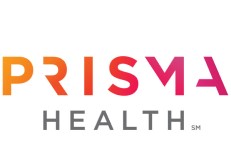| A B C D E F G H I J K L M N O P Q R S T U V W X Y Z # |
FISH, N-myc Amplification, Neuroblastoma
Test Code14621
Alias/See Also
1230410176 | LAB200127: Neuroblastoma, 2p24 (MYCN) Amplification, FISH | QUEST EAP: 14621X
CPT Codes
88271 (x2), 88275
Preferred Specimen
1 mm tumor biopsy collected in a sterile leak-proof container or
5 mL bone marrow collected in a sodium heparin (green-top) tube or
Formalin-fixed, paraffin-embedded tissue
5 mL bone marrow collected in a sodium heparin (green-top) tube or
Formalin-fixed, paraffin-embedded tissue
Minimum Volume
1 mm tumor biopsy • 3 mL bone marrow
Other Acceptable Specimens
Formalin-fixed, paraffin-embedded slides • Bone marrow collected in sodium heparin (royal blue-top) or sodium heparin lead-free (tan-top) tube
Instructions
Clinical history and reason for referal are required with test order.
Specimen viability decreases during transit. Send specimen to testing laboratory for viability determination. Do not freeze. Do not reject.
Specimen viability decreases during transit. Send specimen to testing laboratory for viability determination. Do not freeze. Do not reject.
Transport Temperature
Room temperature
Specimen Stability
Room temperature: See instructions
Refrigerated: See instructions
Frozen: See instructions
Refrigerated: See instructions
Frozen: See instructions
Methodology
Fluorescence in situ Hybridization (FISH)
FDA Status
This test was developed and its analytical performance characteristics have been determined by Quest Diagnostics. It has not been cleared or approved by the U.S. Food and Drug Administration. This assay has been validated pursuant to the CLIA regulations and is used for clinical purposes.
Setup Schedule
Set up: Daily; Report available: 5 days
Reference Range
See Laboratory Report
Clinical Significance
This fluorescence in situ hybridization (FISH) assay detects MYCN gene amplification and may aid in the risk stratification of neuroblastomas.
Neuroblastomas occur predominantly in children and are the most common malignancy in children under 1 year old [1]. Because neuroblastomas are heterogeneous in nature, the treatment decisions are based on risk stratification, which takes into account a patient's age, disease stage, tumor histology, DNA ploidy, MYCN gene amplification status, and segmental chromosome aberration (SCA) [2].
Amplification of the MYCN gene in neuroblastoma is generally associated with advanced tumor stage and unfavorable prognosis. Approximately 20% of all neuroblastoma tumors and 40% of high-stage tumors have MYCN amplification [3]. In patients with low-stage neuroblastomas, amplification of the MYCN gene correlates with lower overall survival and lower event-free survival [4]. In patients with stage M (metastatic) and MS (metastatic, special) neuroblastomas, amplification of the MYCN gene correlates with poor outcomes despite age [2]. However, MYCN gene amplification does not have prognostic value in patients over 18 months of age with stage M disease because of the overall poor outcomes [2].
The results of this test should be interpreted in the context of pertinent clinical and family history and physical examination findings.
References
1. Eisenhofer G. Monoamine-producing tumors. In: Rifai R, et al. eds. Tietz Textbook of Laboratory Medicine. 7th ed. Elsevier Inc; 2022.
2. Irwin MS, et al. J Clin Oncol. 2021;39(29):3229-3241.
3. Marrano P, et al. Genes Chromosomes Cancer. 2017;56(1):28-41.
4. Bagatell R, et al. J Clin Oncol. 2009;27(3):365-370.
Neuroblastomas occur predominantly in children and are the most common malignancy in children under 1 year old [1]. Because neuroblastomas are heterogeneous in nature, the treatment decisions are based on risk stratification, which takes into account a patient's age, disease stage, tumor histology, DNA ploidy, MYCN gene amplification status, and segmental chromosome aberration (SCA) [2].
Amplification of the MYCN gene in neuroblastoma is generally associated with advanced tumor stage and unfavorable prognosis. Approximately 20% of all neuroblastoma tumors and 40% of high-stage tumors have MYCN amplification [3]. In patients with low-stage neuroblastomas, amplification of the MYCN gene correlates with lower overall survival and lower event-free survival [4]. In patients with stage M (metastatic) and MS (metastatic, special) neuroblastomas, amplification of the MYCN gene correlates with poor outcomes despite age [2]. However, MYCN gene amplification does not have prognostic value in patients over 18 months of age with stage M disease because of the overall poor outcomes [2].
The results of this test should be interpreted in the context of pertinent clinical and family history and physical examination findings.
References
1. Eisenhofer G. Monoamine-producing tumors. In: Rifai R, et al. eds. Tietz Textbook of Laboratory Medicine. 7th ed. Elsevier Inc; 2022.
2. Irwin MS, et al. J Clin Oncol. 2021;39(29):3229-3241.
3. Marrano P, et al. Genes Chromosomes Cancer. 2017;56(1):28-41.
4. Bagatell R, et al. J Clin Oncol. 2009;27(3):365-370.
Performing Laboratory
Quest Diagnostics Nichols Institute
14225 Newbrook Drive
Chantilly, VA 20153
Last Updated: April 21, 2023

